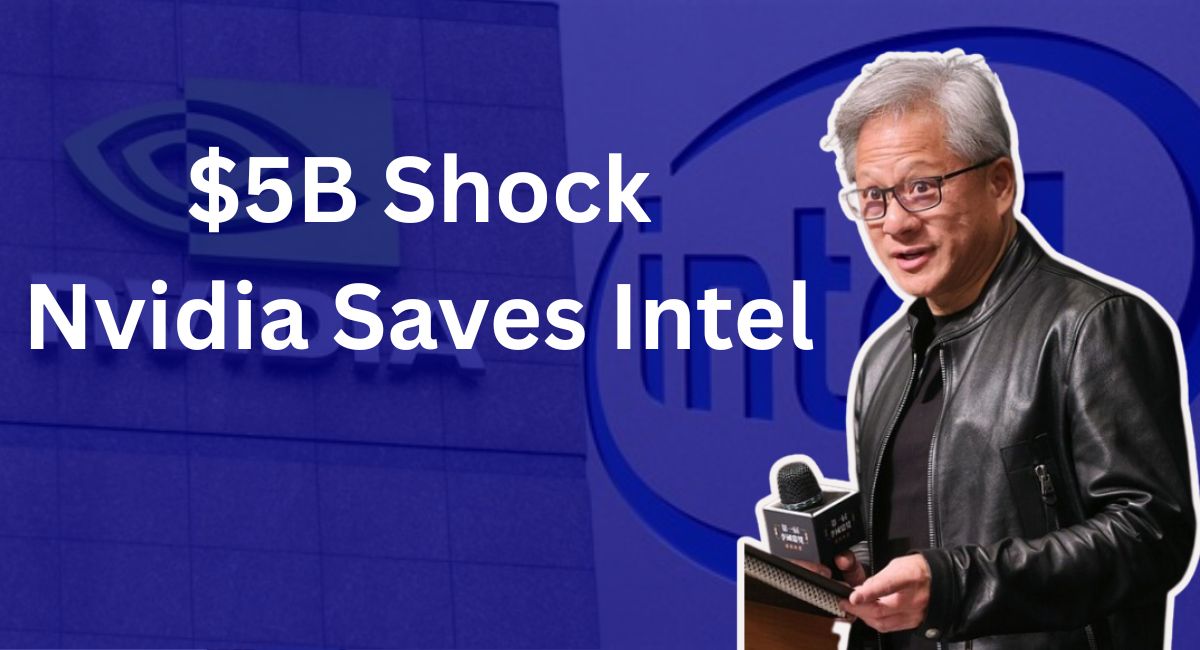The chip industry just witnessed something nobody saw coming. Nvidia Corp. agreed to invest $5 billion in Intel Corp. and said the two will co-develop chips for PCs and data centers, a surprise move to help prop up an ailing archrival that sent Intel shares soaring. What makes this particularly stunning is the timing – analysts estimate that at some point next year Nvidia will pull in more revenue per quarter than Intel gets in a year.
The Numbers That Tell the Real Story
Intel surged 22% after the $5 billion Nvidia investment, posting its best day in nearly 38 years. When you dig into the details, this deal represents something much bigger than just money changing hands. Nvidia will buy Intel common stock at $23.28 per share, making them a major stakeholder in what was once the world’s most valuable chip maker.
The reality check here is brutal: Intel lost nearly $19 billion last year and another $3.7 billion in the first six months of this year, and expects to slash its workforce by a quarter by the end of 2025. Meanwhile, Nvidia, valued at more than $4.2 trillion, advanced 3.5% on the news.
Jensen Huang’s Bold Vision
JENSEN HUANG CALLED THIS COLLABORATION “HISTORIC” AND DECLARED: “TOGETHER, WE WILL EXPAND OUR ECOSYSTEMS AND LAY THE FOUNDATION FOR THE NEXT ERA OF COMPUTING”. The Nvidia CEO went even further, stating they’re going to “build revolutionary products” and claiming “nothing of its kind has ever been built before”.
What’s particularly interesting is how long this has been in the works. Jensen Huang revealed that Intel and Nvidia “have been discussing and architecting solutions now for coming up to a year” and “kept it really quiet”. The strategic planning behind this move becomes clear when you understand the scope of what they’re building.
The Technical Partnership Details
The collaboration breaks down into two key areas. Intel will build x86 central processing units for Nvidia’s AI infrastructure platforms, essentially becoming a major supplier to the AI giant. On the consumer side, Intel will build x86 system-on-chips using Nvidia’s RTX graphics processing units that will power computers.
Huang explained: “We’re going to become a very large customer of Intel CPUs, and we’re going to be a large supplier of GPU chiplets into Intel”. This creates a fascinating dynamic where the two companies become deeply intertwined despite their competitive history.
The Government Connection
The timing isn’t coincidental. Nvidia said it would become another major shareholder in the beleaguered company just weeks after the US government took a roughly 10% stake. This comes as part of a broader push to strengthen domestic chip manufacturing capabilities.
News reports indicate the Trump administration has been heavily involved in pressuring companies to support Intel. The push follows last month’s government intervention, where President Trump signed a deal giving the US government a 10% stake in Intel as part of repurposing existing Chips Act funding. Japan’s SoftBank also made a surprise $2 billion investment in the company last month, amid mounting pressure for this kind of financial support.
The Commerce Secretary has repeatedly emphasized the need to manufacture these chips domestically and maintain dominance against China. This partnership directly supports those national security objectives by ensuring Intel has the resources and partnerships needed to compete globally.
What This Means for the Industry
The market impact extends beyond just stock prices. Intel shares surged 23% on the announcement, lifting its stock market value to $143 billion. The stock is now up about 52% this year. This represents a massive vote of confidence in Intel’s ability to execute on its turnaround plan.
The partnership also signals a shift in how the industry thinks about competition versus collaboration. These two companies have been rivals for years, but the current market dynamics – particularly around AI infrastructure and the push for domestic manufacturing – have created new incentives for cooperation.
What stands out is how this addresses the core challenge facing US chip manufacturing: building domestic capacity is one thing, but someone actually needs to use it. This deal ensures Nvidia will be a major customer, providing the volume Intel needs to make its foundry business viable.
The data centers and PC markets are about to see some revolutionary products emerge from this collaboration. With Nvidia’s AI dominance and Intel’s manufacturing capabilities combined, the industry landscape could look very different in the coming years. The question now becomes whether other major players will follow suit with similar partnerships, or if this remains a unique strategic alliance in an increasingly complex global chip market.
